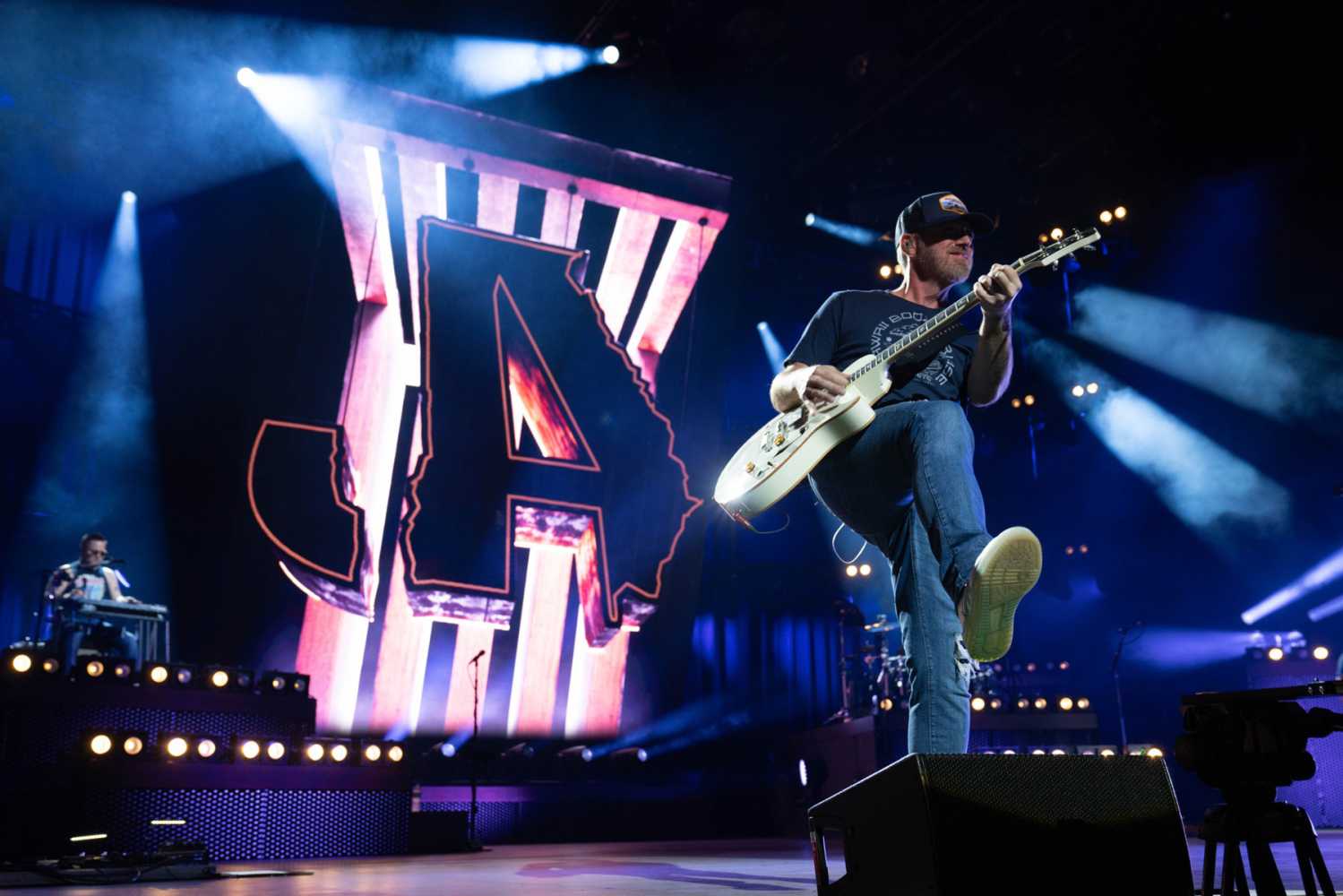Mavericks converge on Jason Aldean tour
- Details

Unlike its predecessor, this year’s just concluded Highway Desperado Tour had a production design that was dominated by a single vertical, centre stage video screen. Measuring 24’ high by 18’ wide by 6’ deep and angled at 20-degrees, the 8mm blow-through wall displayed captivating IMAG images and dynamic patterns accentuated by pixel mapped light from Chauvet Professional Maverick Storm2 BeamWash fixtures, which, like the rest of the rig, were supplied by Bandit Lites.
“We wanted to change the screen design for a different look, but beyond that, our desire was to trigger new creative ideas for the content,” said Larivée, who worked on this production with the Lüz team of David Rondeau, Philippe Marquis, and Pierre-Luc Bedard. “So, we came up with the idea of using a monolith that we playfully called the ‘cereal box,’ because in actuality, it’s a 3D physical box.”
Run by LD Andy Knighton, the show took the convergence of video and light to a new level, as the cereal box merged graphics and effects into a compelling blend that conveyed the raw, powerful energy of Aldean’s music and stage presence. At some points, the graphics rolled down the screen like a waterfall of lighting effects imposed over IMAG images of the artists, enlarging the stage presence of both. At other points, IMAG images were framed in cubes rotated within the box to create a dazzling motion effect.
A notable feature of the video wall, and one that added greatly to its dimensionality, were the Maverick Storm 2 BeamWash fixtures positioned behind the giant structure and the three layers of curved trusses that were wrapped around it. All of the Storm 2 units were video mapped; and their white pixel light often shined brightly through the wall, evoking the imagery of sparkling stars.
“We pixel mapped the Storm 2 to link it to the video content,” said Larivée. “This was not typical pixel mapping, where you feed an image into the lighting fixture. Instead, we used the coordinates of each cell within the 3D space, so they could be perfectly matched to the video wall. Philippe Marquis came up with some crazy pixel mapping for each cell - and that was a real game changer.
“By merging light and video, our pixel mapping allowed us to create some dazzling images,” continued Larivée. “We also used AI tracking to match IMAG with the wall of lights. The box dictated more IMAG with the lights. The fun part of this whole thing was creating 3D shapes that worked well within the box that could hold IMAG feeds using our scenic approach.”
A collection of 106 Maverick Storm 2 BeamWashes were used in the tour’s rig. In addition to projecting pixel mapped effects synced to video images on the blow-through wall, the ultra-bright (almost 10,000 lumens) fixtures were used to enliven areas of the stage beyond the video screen, including band risers.
Also playing a key role in the design were 86 Color STRIKE M fixtures. Hung horizontally, and positioned behind the metal grated facia, these multi-formatted fixtures expanded the array of looks supporting the show through their strobing and richly coloured effects.
To add structure and extra color to the stage, the design team relied on 41 COLORado PXL Bar 16 motorized tilting battens. Positioned across the stage deck, these fixtures moved in sync with the rig’s lighting and video.
Complementing this forward-looking convergence of light and video looks was some old school audience lighting. Larivée notes that the traditional warmth created by this light deepened the connection to the crowd.
















